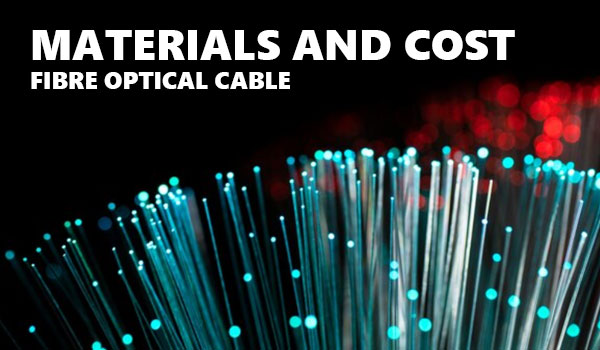Fibre optic cables are composed of many essential components and are frequently utilised in fibre net (fibre optic network) installations. The main parts of a standard fibre optic cable are listed below.
Strength Members: Aramid yarn (like Kevlar), which increases the cable’s tensile strength and increases its resistance to pulling or stretching forces, is a common component found in fibre optic cables.
The outer jacket serves as the last line of defence for the entire wire. It is constructed from a sturdy material, such as low smoke zero halogen (LSZH) or polyvinyl chloride (PVC), and it offers further defence against environmental elements, wetness, and physical harm.
Numerous factors, such as the kind of fibre optic cable, the distance to be covered, installation requirements, and the particular needs of the network, can affect the cost of fibre optic networks and the materials required. Here are some things to think about:
Fiber Optic Cable Types

Single-Mode vs. Multi-Mode:
- Single-mode fiber (SMF) is generally more expensive than multi-mode fiber (MMF) due to its ability to transmit data over longer distances with lower signal loss.
- Multi-mode fiber is suitable for shorter distances within buildings or campuses.
Armored vs. Non-Armored:
- Armored fiber optic cables, with additional protective layers, may cost more but offer enhanced durability and resistance to environmental factors.
Indoor vs. Outdoor:
- Outdoor fiber optic cables often have additional layers for weather resistance and may include water-blocking materials.
Installation Costs:

Labor Costs:
- Labor costs for installation, termination, and splicing can significantly contribute to the overall expense.
Equipment Costs:
- Fusion splicers, termination kits, and testing equipment contribute to the overall cost.
Material Costs:

Fiber Optic Cable Materials:
- The core and cladding materials (usually glass or plastic), buffer coating, strength members, outer jacket, and any additional materials such as ripcords and water-blocking components.
Connectors and Termination Materials:
- Connectors, adapters, and termination materials (pigtails, splice trays, etc.) contribute to the cost.
Installation Hardware:
- Mounting hardware, conduit, and other materials needed for the physical installation.
Additional Considerations
Quality and Standards:
Higher-quality cables and components that meet industry standards may cost more but can offer better performance and reliability.
Network Design Complexity:
The complexity of the network design, including the number of termination points, splicing requirements, and any special considerations, can impact costs.
Geographic Location:
Local labor rates, environmental conditions, and regulatory requirements can vary by location and affect overall costs.
Important Notes:
Use the proper safety equipment and adhere to all safety regulations.
It’s best to get help from a qualified expert if you have no experience fixing fibre optic cables.
Remember that certain tools and knowledge may be needed to repair fibre optic cables. If in doubt, seek assistance from a qualified technician or your service provider.

